 |
SRGC Bulb Log Diary |
| Home Recommend This Site To A Friend |
|
BULB LOG 33 14th August 2003
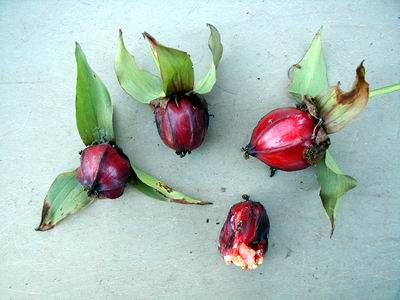
Trillium seed pods Sometimes seed pods can be as attractive as the flowers, like these Trillium seed heads. The wasps do not seem to raid this one, in fact it is only T. ovatum that they go crazy for in our garden. I was telling some one how I separate out my trillium seeds from the sticky fruit and they said 'I wish you had told me that before', so here is how I do it. 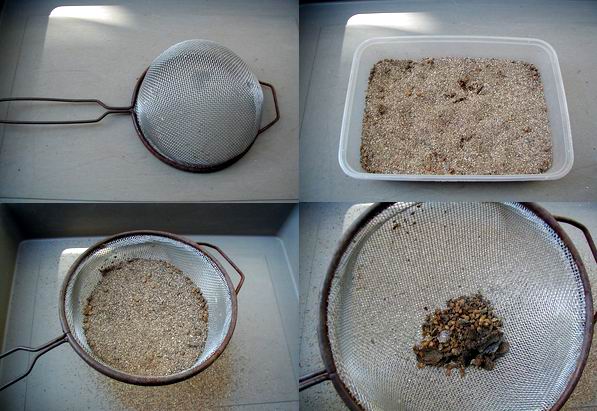
Sand and sieve Pass some dry sand through a kitchen sieve then place the seed pods into a container filled with the sieved dry sand (top right) and give it a good crush and mix so the fruit is well squashed. Then you just leave it for a day or so, by which time the sand has absorbed all the moisture, give it a shake and then pass it all back through the sieve (lower left). You should now be able to pick out the skin of the fruit and be left with nice dry clean trillium seed, which I like to sow now. No matter how careful I am we always end up with stray frits getting mixed up in pots. Have I mentioned that I believe that if you grow frits in pots for long enough they will all turn into F. acmopetala or F. hermonis amana ?!! It is also inevitable if you are buying Frits in multiples, that you will occasionally get strays, it is a fact of life. 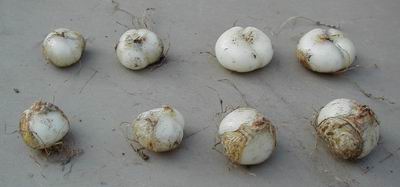
Frit bulbs mixed Sometimes you can detect a slightly different shape to the bulb when repotting. This is a pot of F tubiformis (bottom row) that was invaded by F. hermonis amana (top) --luckily the tubiformis has a pointed top while hermonis amana has a flat top. Now I have a nice pot of tubiformis, a nice pot of hermonis amana and a pot of mixed rice ! 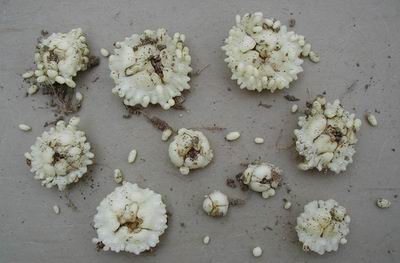
Frit pudica bulbs I know I am always going on about frit bulbs but I just find them fascinating, I think that F. pudica has one of my favourite bulbs. It is one of these 'flying saucer' affairs that, like many of the North American Frits, produces rice grains around the edge of the new bulb in the spring unlike the Eurasian types where the rice grains are produced on the old bulb in the autumn. It is worth a close up. 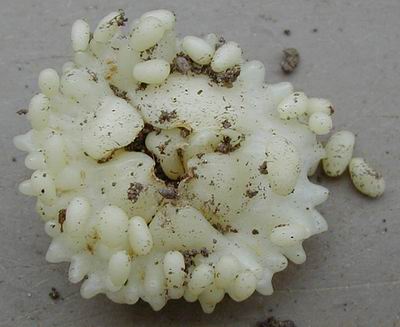
Frit pudica bulb 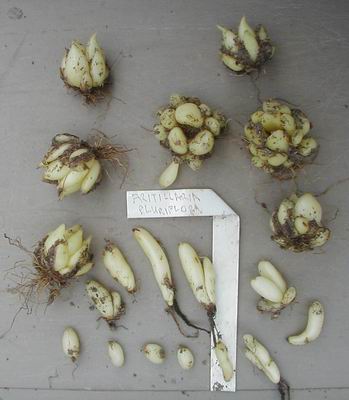
Frit pluriflora Frit pluriflora is another North American bulb which could very easily be taken for a lily bulb. They start out when they are young as single scaled bulbs (bottom) then they form two scales and year by year they add more scales until they become a mature flowering sized bulb. You can see that one or two of the banana shaped juvenile bulbs beside the label have the remains of a large dark contractile root attached, this is an indication that the bulb would prefer to be planted deeper in the pot if possible. The outer layer of scales on the mature bulbs are very easily detached and offer a good way of increasing stocks, they are almost like a primitive form of rice grains. 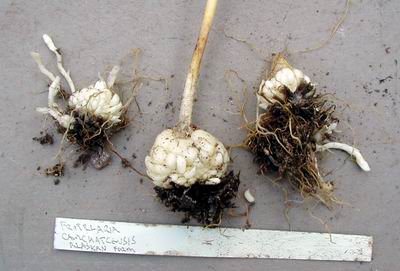
Fritillaria camschatensis Alaskan Fritillaria camschatensis shows a similar pattern of forming rice grain offsets and sometimes it sends out stolons, some of its' forms being more stoloniferous than others. It is interesting that Fritillaria camschatensis has a basic twin scaled bulb which is surrounded by the offsets as if it is the link between the Eurasian and the N. American frits and of course it occurs on both Continents. 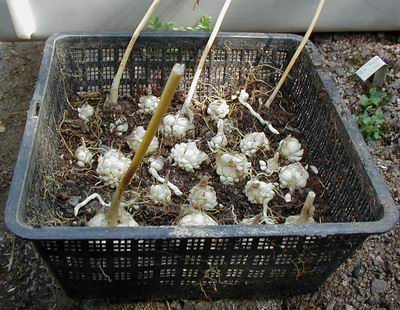
Fritillaria camschatensis in basket We grow our Fritillaria camschatensis in plunge baskets as they much prefer to be outside where it is cooler and moister in the summer than under glass. 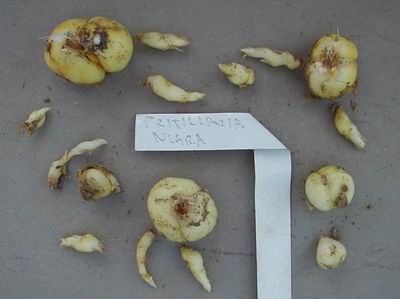
Fritillaria nigra Some of the old world Frits also produce stolon-like off sets, such as Fritillaria nigra which is in the group that includes Ff. montana and orientalis and some think that nigra is synonymous with montana. 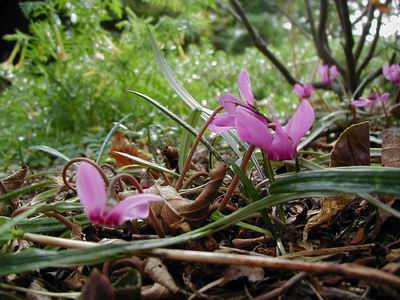
Cyclamen purpurescens I always think that it is a sure sign that summer is drawing to an end when Cyclamen purpurescens starts to flower, but it flowered very early this year the first flowers appeared more than three weeks ago - I do not think that summer is over yet. It has one of my favourite scents of all the flowers. 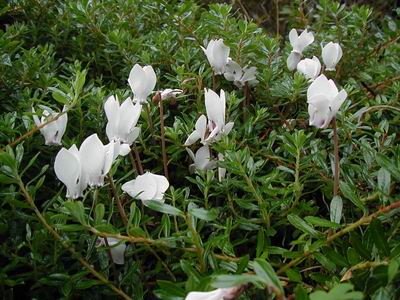
Cyclamen hederifolium white This white form of Cyclamen hederifolium always looks good coming through this dwarf willow Salix hylematica. PS. The colchicuum in last weeks log is Colchicum (merendera) montanum, I remembered as soon as the log was posted! ^ back to the top ^ |